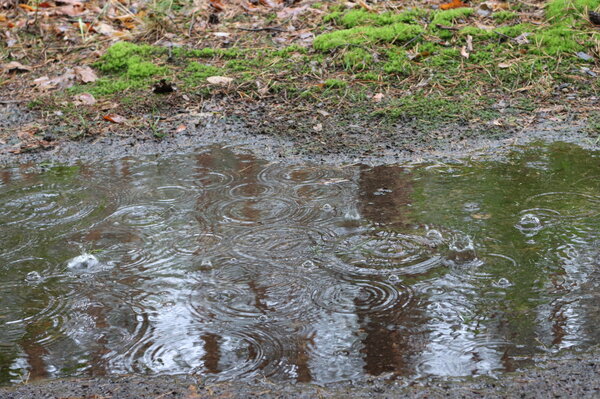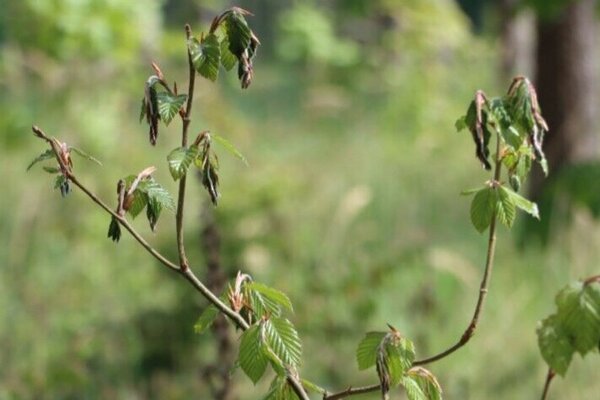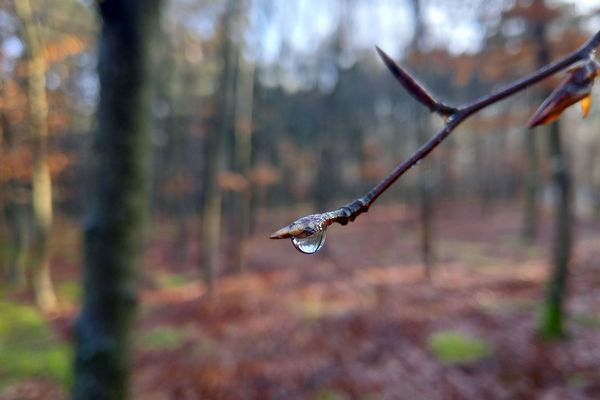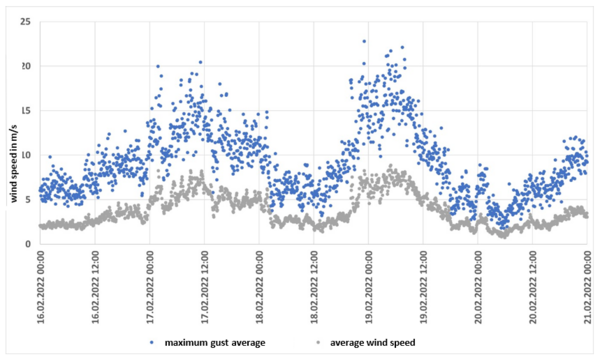Evaluations & results
On this page you will find exciting results of the investigations and surveys at the Britz intensive care monitoring area.
2025: Rain in July balances the water balance in the forest (08/2025)
The weather in July, which was not very suitable for outdoor swimming, is good news for the forest. After the long drought in spring, there was now plenty of rainfall on the Thünen trial area in Britz. This has made up for the deficit.

The weather in July, which was not very suitable for outdoor swimming, is good news for the forest. After the long drought in spring, there was now plenty of rainfall on the Thünen trial area in Britz. This has made up for the deficit. The moors are also well filled.
With an average of 76 millimetres of rain per square meter, July is the wettest month of the year (average of the years 1993 to 2022). This is shown by long-term measurements at the Thünen Institute of Forest Ecosystems' experimental site in Britz, Brandenburg. This year, there was significantly more rain in July with 190 millimetres per square meter. The deficits that had built up due to the very dry spring have been balanced out. Overall, the total amount of precipitation reached the long-term average.
You can find the full article here:
2025: Rain in July balances the water balance in the forest
2025: Poor starting conditions for forests (06/2025)
An exceptionally dry spring is affecting the forests: Only a quarter of the usual precipitation has fallen on our intensive monitoring area in Britz since March. The result: poor growing conditions and hardly any new groundwater formation.

From the beginning of March to the end of May, it only rained 35 millimetres this year at the forest hydrology test site in Britz. That is a quarter of the average precipitation compared to the same months in the years 1993 to 2022. In January, the precipitation was still above average, then it leveled off. So far this year, it has only rained 140 millimetres. This is the second-lowest figure since 1993. Only in 2003 was it slightly drier from January to May, with only 139 millimetres of precipitation.
In contrast to the wet winter half-year 2023/2024, the starting conditions for forest vegetation are therefore poor this year. The landscape water balance also suffers because little or no new groundwater is formed due to the drought and the vegetation empties the soil water reservoir.
You can find the full article here:
Good conditions for spring budding in forests (03/2024)
There hasn't been so much rain in winter since measurements began in 1993. Ideal conditions for the plant world for spring growth.

In recent months, it has not only felt like it has rained a lot - this winter has set a new record: For 30 years, precipitation and seepage have been measured alongside other parameters at the forest hydrology test site in Britz near Eberswalde. With 311 millimeters (mm) of rain and snow measured, there was more water than ever before since the time series began. The amount of precipitation is good news for the upcoming growing season. This is because winter precipitation is important for moistening the soil and creates good starting conditions for the plants to sprout in spring.
You can find the full article here:
Information on wind speeds and storm damage at the Britz intensive monitoring area (02/2022)

Between February 17 and 19, 2022, stormy conditions also prevailed in north-eastern Germany due to the passage of the storm lows "Ylenia" and "Zeynep". With comparatively low wind speeds of between 80 and 90 km/h, the two storms hit the Britz intensive monitoring area and caused storm damage to several trees. These affected both the approximately 50-year-old Douglas fir and the pine stand, as well as older pines in the buffer area of the lysimeter station. They include various forms of damage. Several trees were uprooted and both trunk breakage at breast height and crown breakage occurred. Among the affected trees are also measuring trees that were equipped with dendrometers for circumference measurement. Just a few weeks earlier, the trees at the test station had had to withstand the storm "Nadia". At that time, only a few Douglas firs fell victim to the storm.
In the "WinMol" project, we dealt with storm damage, further information can be found here: